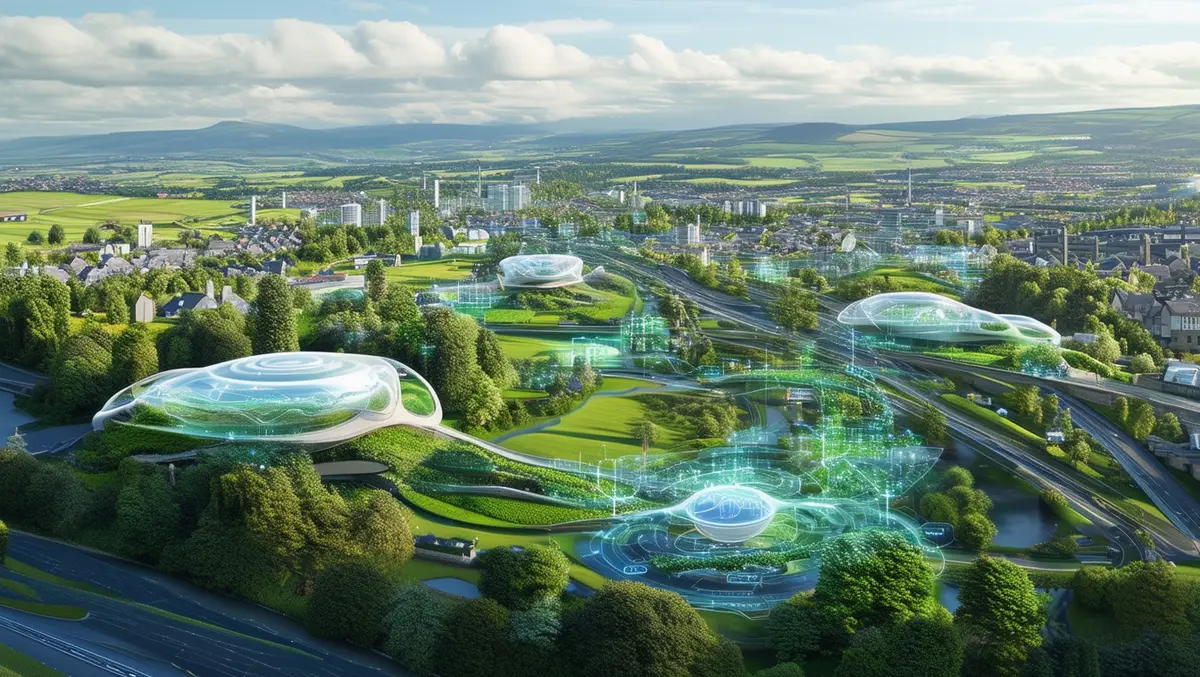
Climate tech firm creates digital twin for net-zero Stirling plan
A Glasgow-headquartered climate tech company, IES, has created a digital twin of the Stirling and Clackmannanshire region to map the city region's pathway to becoming carbon-neutral. Covering 3D geometries for every building in the 2,413 square kilometre region, this digital model forms the basis of an energy masterplan.
IES' simulations reveal that carbon emissions from energy used to heat and power the region's buildings can be reduced by approximately 98% by 2045 compared to a 2022 baseline. This reduction is integral to achieving the area's target of net zero by 2045.
A digital twin is a dynamic virtual replica that allows users to test, model, and refine various parameters in real time. For buildings, these factors include energy usage, renewable energy generation, and heat networks. IES utilised this advanced technology to develop the digital twin for Stirling and Clackmannanshire Councils. This comprehensive model considers several factors impacting energy efficiency and emissions, such as building materials, heating systems, and fuel types.
The Regional Energy Masterplan, informed by the digital twin, spans four stages between 2023 and 2045. These stages cover energy efficiency, heat management, and energy generation. Based on the model's evidence, the plan identifies which low-carbon energy systems should be deployed across the region for the most effective economic, environmental, and social sustainability outcomes.
Craig McKendrick, public sector lead at IES, commented, "In a world where energy is vulnerable to socioeconomic and geopolitical factors, and we're increasingly aware of our climate emergency, energy planning is a major public sector priority. The decisions we make now need to look at the long-term and be informed by the data. Accessing the evidence that intelligent tech now affords can be a game-changer when it comes to planning the route to improved efficiency and reduced emissions."
McKendrick continued, "This project is a great example of two forward-thinking local authorities choosing to act on insight and ready themselves for the transition the region will need to go through over the course of the next two decades. By creating a digital twin of the entire Stirling and Clackmannanshire region, we can see how things are actually working in practice and identify what could be done to make the biggest impact in the most efficient way. It also helps us to model a range of prospective scenarios, identifying potential risks and barriers that could crop up along the journey to 2045."
Stirling Council Leader, Councillor Chris Kane, added, "By transforming our energy use and generation we can protect the natural environment for future generations, reduce fuel poverty and create new skilled jobs in a growing sector. Our roadmap to achieving these ambitions is the Regional Energy Masterplan. The importance of collaboration at the core of the plan, and working with IES has enhanced our understanding of regional energy consumption on our journey to creating a net-zero energy system."
"We look forward to working with IES and other partners in the private and public sectors to successfully deliver the projects within the plan and secure affordable energy for everyone in the region," he said.
The digital model of Stirling and Clackmannanshire remains live and will serve as an ongoing resource for the Councils to test future scenarios and access the data required for informed decision-making. Following the initial Regional Energy Masterplan project, IES is working on outlining business cases for two large-scale renewable projects for the Councils.


